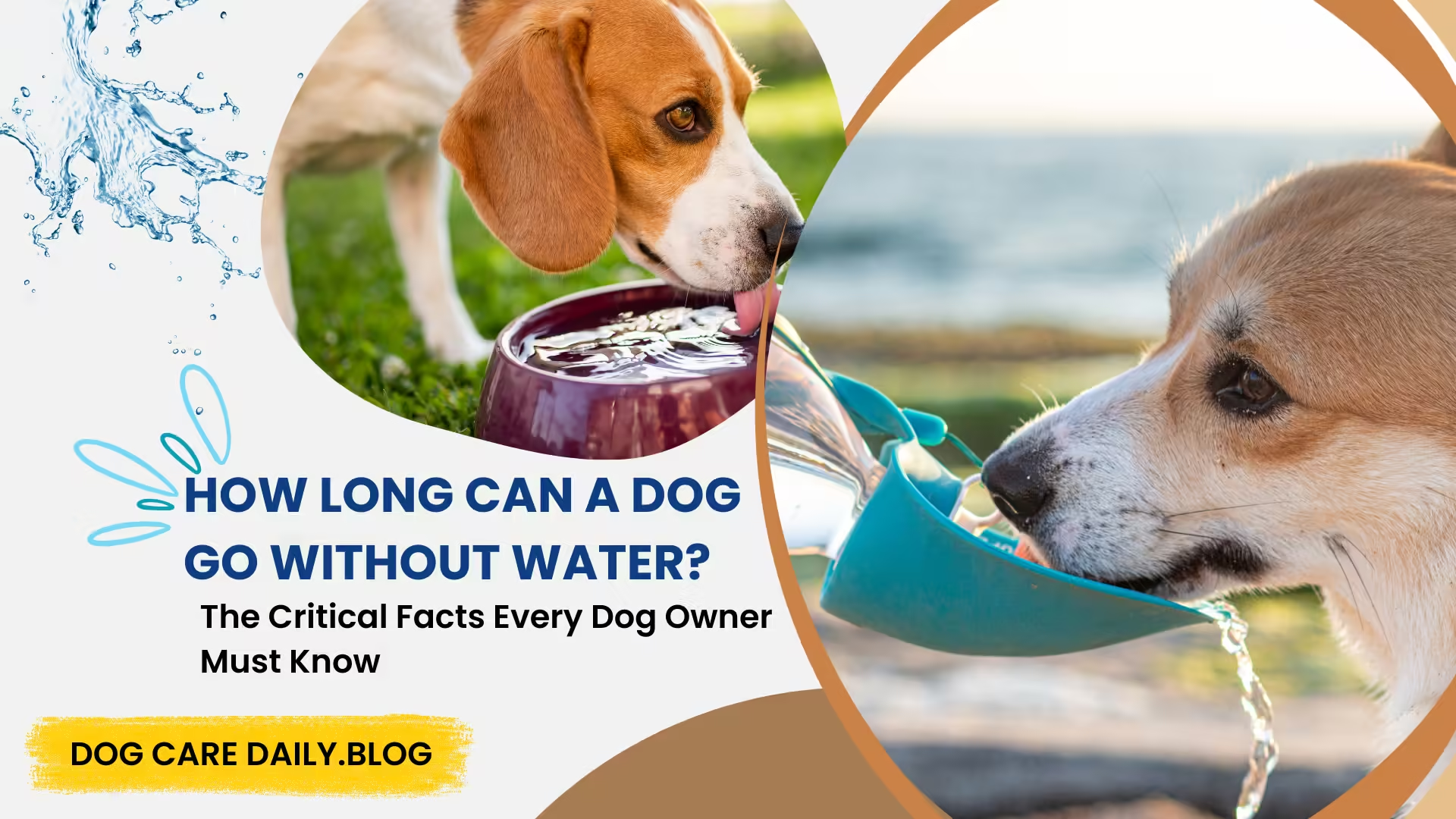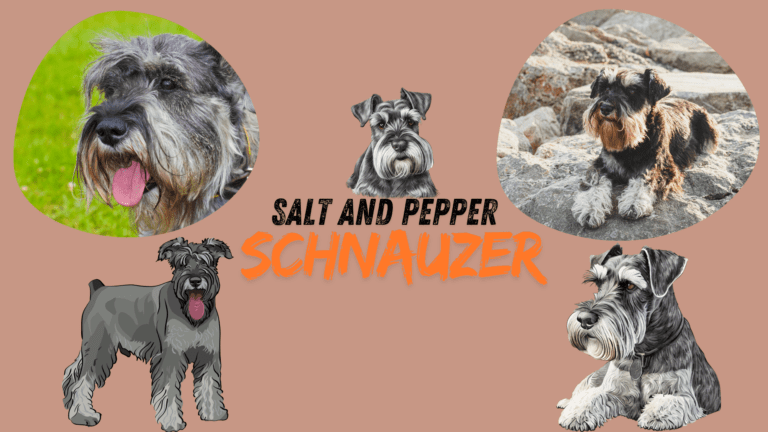How Long Can a Dog Go Without Water? The Critical Facts Every Dog Owner Must Know
Water is life, and dogs are no different. Just like humans, dogs need water for their bodies to digest, circulate, and regulate temperature. Food is important, but water is even more so—without it, a dog’s body can start shutting down in no time.
If you are wondering how long a dog can survive without water, the general answer is about 72 hours or 3 days. However, severe dehydration can begin much earlier and lead to life-threatening consequences. The exact time frame depends on several factors, including age, health, activity level, and environment.
This article discusses the role of water in a dog’s body, dangers of dehydration, signs to look out for, and ways of ensuring that your furry friend remains well-hydrated.
The Role of Water in a Dog’s Body
Water is the most vital nutrient to a dog. It constitutes 60-70% of a dog’s body weight and contributes importantly to:
- Regulating body temperature – Dogs do not sweat like humans; they pant and drink water to cool themselves.
- Digesting food and absorbing nutrients – Water breaks down food and transports nutrients to cells.
- Eliminating waste – Through urination and bowel movements, water helps remove toxins from the body.
- Lubricating joints – This is to ensure smooth movement and prevent stiffness.
- Maintaining organ function – Every organ in a dog’s body needs adequate hydration.
When a dog does not receive enough water, these critical functions begin to shut down, resulting in dehydration and severe health problems.
How Long Can a Dog Survive Without Water?
While a dog can survive up to 3 days (72 hours) without water, this does not mean they can operate normally. The symptoms of dehydration occur much sooner.
- After 24 hours – A dog may become lethargic and display symptoms of mild dehydration.
- After 48 hours – There are more severe symptoms such as dry gums, loss of skin elasticity, and increased heart rate.
- After 72 hours – There is a high risk of failure of organs and death.
Some factors that may reduce the time period include hot weather, illness, and exercise. Puppies, senior dogs, and dogs with a medical condition may experience dehydration effects earlier.
Factors That Influence a Dog’s Water Needs
The quantity of water a dog needs depends on various factors:
1. Size and Breed
Bigger dogs typically need more water than smaller breeds.
Brachycephalic breeds (like Bulldogs and Pugs) tend to overheat more easily, increasing their water needs.
2. Age and Life Stage
- Puppies – Need more frequent hydration since their bodies are still developing.
- Adult dogs – Require a stable water intake, especially if they are active.
- Senior dogs – Often have decreased kidney function, and they need to drink more to stay hydrated.
3. Diet
- Dry kibble-fed dogs need more water since kibble contains very little moisture.
- Wet or raw-fed dogs get additional hydration from their food, but they still need access to fresh drinking water.
4. Activity Level
A highly active dog will need more water, especially after exercise, play, or training sessions.
5. Weather and Climate
Hot and humid climates cause dogs to drink more water due to excessive panting. In cold weather, a dog’s instinct to drink is decreased, causing unnoticed dehydration.
Signs of Dehydration in Dogs
Dehydration can be fatal if it is not recognized early. Some of the common symptoms are:
Early Signs
- Lethargy and decreased energy
- Loss of appetite
- Thick, sticky saliva
Moderate Dehydration
- Dry nose and gums
- Sunken eyes
- Excessive panting
Severe Dehydration (Medical Emergency)
- Collapse or weakness
- Rapid heartbeat
- Dark urine or no urination
- Shock and potential organ failure
A simple test to check for dehydration is the skin elasticity test:
- Gently pinch the loose skin between your dog’s shoulder blades.
- If it snaps right back into place, the dog is hydrated.
- If it stays tented or returns slowly, dehydration may be present.
Health Risks of Dehydration in Dogs
Severe consequences for dehydration include:
1. Organ Failure
The kidneys, liver, and other organs depend on proper hydration. Severe dehydration can lead to irreversible damage.
2. Heatstroke
Dogs are highly susceptible to heat exhaustion. Without enough water, they cannot regulate their body temperature properly.
3. Shock and Death
If dehydration progresses, a dog’s blood pressure drops, leading to shock and potential fatality.
Common Causes of Dehydration in Dogs
Preventing dehydration is important, and causes of dehydration need to be identified. Some common causes include;
- Lack of Access to Water – Forgetting to refill the water bowl or traveling without a water source.
- Illness – Vomiting, diarrhea, kidney disease, or fever can cause excessive fluid loss.
- Overheating – Exercising in hot weather without drinking water can quickly lead to dehydration.
- Medications – Some medications (such as diuretics) cause the dog to urinate more frequently and lose water.
How to Encourage Your Dog to Drink More Water
If your dog is not drinking enough water, try these suggestions:
- Use Different Water Bowls – Some dogs prefer ceramic or stainless steel bowls over plastic.
- Provide Running Water – Pet fountains encourage drinking by keeping water fresh.
- Flavor the Water – Add low-sodium broth or a small amount of tuna juice.
- Offer Ice Cubes – Some dogs like to lick ice for entertainment purposes.
- Increase Moisture in Food – Adding moistened food or water to kibble is also helpful in hydrating.
What to Do If Your Dog Refuses to Drink Water
If your dog does not want to drink water for over 24 hours, consult your vet immediately. A vet will give your pet intravenous (IV) fluids or electrolyte solutions to avoid severe complications.
FAQs About Dog Hydration
1. How much water should my dog drink daily?
Normally, a dog should drink 1 ounce of water for every pound of body weight daily.
So, for instance, a 50-pound dog should drink around 50 ounces of water every day.
2. Can a dog drink too much water?
Yes. Too much water (polydipsia) could be a symptom of kidney disease, diabetes, or other conditions.
3. Do all dogs need the same amount of water?
No. Puppies, senior dogs, and active dogs tend to drink more.
4. What should I do if my dog is vomiting and refuses water?
This may be an indicator of a serious illness. Get your pup to a vet ASAP.
5. Are certain dog breeds more prone to dehydration?
Yes. Brachycephalic breeds such as Bulldogs and Pugs easily overheat and need their hydration levels closely monitored.
Conclusion
While a dog may survive for up to 3 days without water, serious dehydration can occur within 24 hours. Providing constant access to clean water is one of the most important responsibilities of a pet owner. If you ever notice signs of dehydration in your dog, take immediate action—proper hydration is crucial for a happy and healthy pet.







